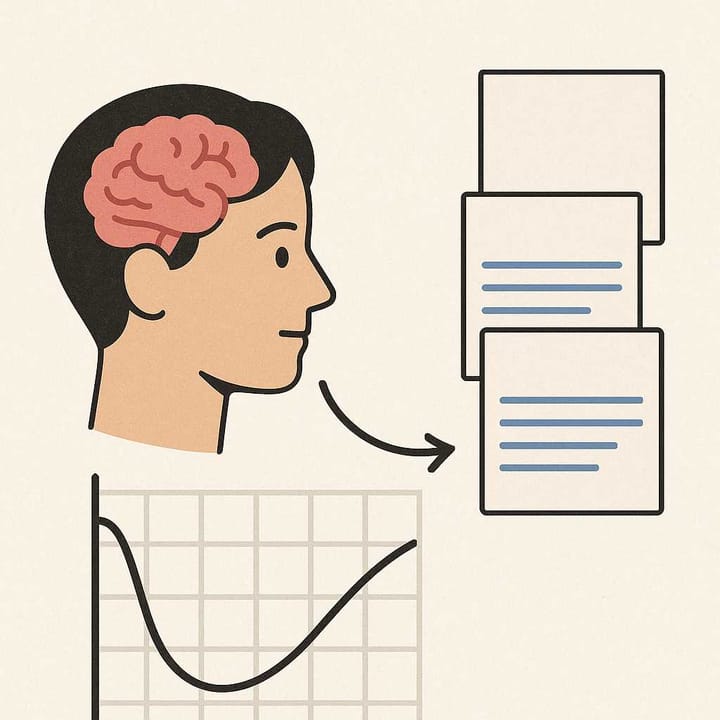Mastering Mind Mapping: A Revolutionary Study Technique for ACA Students
Unlock the power of visual learning with mind mapping. Discover how this dynamic technique can transform your ACA studies, boost retention, and make complex subjects more manageable.

The Essence of Mind Mapping
Mind mapping is a visual thinking tool that has the potential to revolutionise the way ACA students approach their studies.
Imagine transforming a daunting sea of text into an engaging, colourful, and organised diagram that not only captures the essence of the information but also makes revision enjoyable. This is the power of mind mapping.
At its core, a mind map is a diagram that visually represents information, with a central concept at its heart. From this focal point, branches sprawl outwards, representing connected ideas or key components.
Each branch may have its own sub-branches, further exploring the concept it represents.
This hierarchical and relational structure allows students to easily visualise how different pieces of information fit together, making it an invaluable tool for tackling the complex concepts and voluminous data encountered in ACA studies.
The beauty of mind mapping lies in its simplicity and flexibility. To create a basic mind map, you start by placing the central theme or subject in the middle of the page. From there, major related topics radiate outward in all directions as large branches. Lesser but still relevant topics branch off from these major limbs, forming a connected nodal structure. The use of colours, symbols, and images is not just encouraged but integral to the mind mapping process, making the visual representation not only more appealing but also easier to memorise.
Crafting Effective Mind Maps
Creating an effective mind map requires more than just jotting down thoughts and connections. For ACA students looking to enhance their study and revision sessions, a strategic approach is essential. Here are some key steps to crafting powerful mind maps:
- Choose the Right Tools: While mind maps can be created on paper, offering flexibility and freedom from distractions, digital tools like MindMeister, XMind, or Coggle can be particularly powerful. These platforms offer features such as templates, collaboration options, and the ability to easily make changes/corrections, which can be invaluable for complex ACA topics.
- Identify Your Central Idea: Begin with a clear central idea. For ACA students, this could be a key topic like "Group Relief" or "Interest Rate Derivatives". Write this central idea in the middle of your map and encircle it.
- Add Major and Minor Branches: From your central idea, draw branches for the main sections or principles related to the topic. From each of these main branches, draw smaller branches to explore deeper details. For instance, under "Related Party Transactions", you might have branches for different disclosure requirements, with further branches detailing their specific requirements or implications.
- Use Keywords and Images: Instead of long sentences, use key phrases or single words to maintain clarity and effectiveness. Images can serve as powerful mnemonic devices, making the recall process easier. These visual elements often stick in the mind more effectively than individual sentences.
- Employ Colours: Colours can help differentiate between themes, denote relationships, and aid in faster memorisation. Assign different colours to different branches or themes. This not only makes your mind map more visually appealing but also more functional.
- Review and Revise: As you progress in your studies, continually update your mind maps. Adding new information or adjusting the structure as you deepen your understanding of the topic can reinforce your learning and aid in retention.
Tackling Complex Subjects with Mind Maps
Complex subjects in the ACA curriculum often involve intricate details and extensive content that can feel overwhelming. Mind maps can simplify these subjects by breaking them down into more manageable components. For example, when dealing with a complex subject such as "Risk Assessment in Auditing", start by creating a branch for each major risk category like "Inherent Risks", "Control Risks", and "Detection Risks". Under these categories, you can map out specific risks involved, tests or controls used to mitigate these risks, and key standards or regulations that apply.
In addition to structuring complex information, mind maps can be incredibly beneficial for problem-solving and integrating new knowledge with existing understanding. By visually connecting new concepts to prior knowledge, you can foster a deeper comprehension and develop a robust framework for tackling exam questions and real-world applications.
Maximising the Benefits of Mind Mapping
To truly harness the power of mind mapping in your ACA studies, consider the following advanced techniques:
- Cross-linking: Don't be afraid to draw connections between different branches of your mind map. This can help you identify relationships between different concepts that may not be immediately apparent.
- Use it for Revision: As exams approach, create comprehensive mind maps that cover entire modules. This can serve as a quick reference guide and help you identify areas that need more attention.
- Incorporate Practice Questions: Add branches to your mind maps that include common exam questions or scenarios related to each topic. This can help you prepare more effectively for the applied nature of ACA exams.
- Digital Integration: If using digital tools, take advantage of features like attaching documents, adding links to relevant resources, or even embedding video explanations to create a more comprehensive study aid.
- Regular Review: Make reviewing and updating your mind maps a regular part of your study routine. This not only reinforces your learning but also helps you track your progress and understanding over time.
Mind mapping is not just about drawing branches out of a central idea—it's an active study technique that can revolutionise the way you assimilate complex information. Whether it's simplifying intricate subjects, enhancing memory retention, or fostering collaborative learning, mind mapping is a skill that can significantly uplift your academic and professional performance.




Comments ()